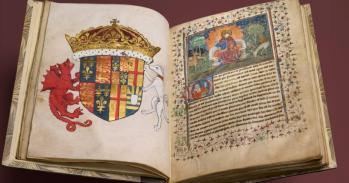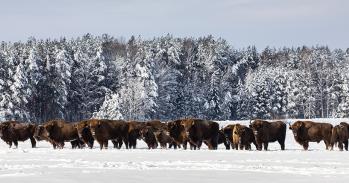
The humble cod may be about to have its biggest impact on history since sparking “war” with Iceland in 1972.
The humble cod may be about to have its biggest impact on history since sparking “war” with Iceland in 1972.
The emergence of commercial fishing represents a major watershed in European economic history and the intensity of human use of the sea. It may also represent the point at which people started to have an impact on marine ecosystems.
Dr James Barrett
An international team of archaeologists led by Cambridge University have devised a new technique which uses cod bones to identify where the fish our ancestors ate during the Middle Ages were caught.
Researchers believe it could dramatically revise our understanding of how and when the human exploitation of European fish stocks - and its now devastating impact on marine life - began. While the ecological crisis caused by the intensive farming of the sea is often seen as a modern problem, the new study suggests that humans may have been influencing marine ecosystems for the last 1,000 years.
So effective is the method, which relies on the analysis of "chemical signatures" in the cod bones, that the remains of a piece of fish perhaps once enjoyed by a citizen of York in 1000 AD could, for example, be shown to have been caught in waters off the coast of Viking Norway.
"The emergence of commercial fishing represents a major watershed in European economic history and the intensity of human use of the sea," Dr James Barrett, who led the research, said. "It may also represent the point at which people started to have an impact on marine ecosystems."
"By analysing the collagen in the cod bones, we can make a pretty good guess about where a fish was first caught, and that means we can track the expansion of the fishing trade at the end of the first millennium."
Archaeologists already know that there was a fishing revolution in Europe around the period 950 to 1050 AD; an upswing which is sometimes referred to as the "fish event horizon".
Until that point, our European ancestors had not eaten fish in large quantities since prehistoric times. Once they rediscovered their ability to harvest the seas, fish consumption rocketed, with herring and cod the most popular staples.
Our picture of how the fishing trade then developed is, however, still patchy. Strikingly, the new research suggests that almost from the start dried fish was being traded over extremely long distances, for example, from Arctic Norway into the Baltic. Rather than just plundering local waters, therefore, early medieval societies may well have been casting their net much wider, extending their economic interests at the same time.
For historians this could help mark the origins of the notion of Europe as an economic community. Earlier European societies traded small quantities of luxury items over long distances, but fish is high in bulk and low in value. The explosion of the fish trade during the 11th century suggests, therefore, that a thriving network of commercial links was developing across Europe. In many ways, this was to prove the first step towards wider European identity.
The study used bones from archaeological sites in northern and western Europe, focusing on medieval settlements in Arctic Norway and around the North Sea and the Baltic.
Studies of modern-day fish tissue have shown that it carries an "isotopic signature"; a chemical indication of what the fish have been eating and of the temperature and salinity of their marine environment. This has allowed scientists to distinguish between different populations of the same fish species.
In medieval times, cod were usually decapitated prior to salting and/or drying for long-range trade. This meant that wherever the researchers came across a cod's skull bone, they could presume it had been caught locally.
On the other hand vertebrae, particularly those with tell-tale butchery marks, were potentially from the parts of the cod that had been sold and eaten. By cross referring their isotopic signatures with those of the skull bones, the researchers were ultimately able to match up the heads and bodies that had once belonged to cod of the same population, thousands of years ago, and often hundreds of miles apart. In most cases, the results are thought to be at least 90% accurate.
"At the moment the historical record for the growth of Northern Europe's fishing industry is incomplete," Dr Barrett said.
"We have already been able to hypothesise that fish were being transported over vast distances right at the start of northern Europe's sea fishing revolution. In time we should be able to fill out a detailed picture of how what has since become a modern environmental crisis actually began."
The findings are reported in the new edition of the Journal of Archaeological Science.
This work is licensed under a Creative Commons Licence. If you use this content on your site please link back to this page.





